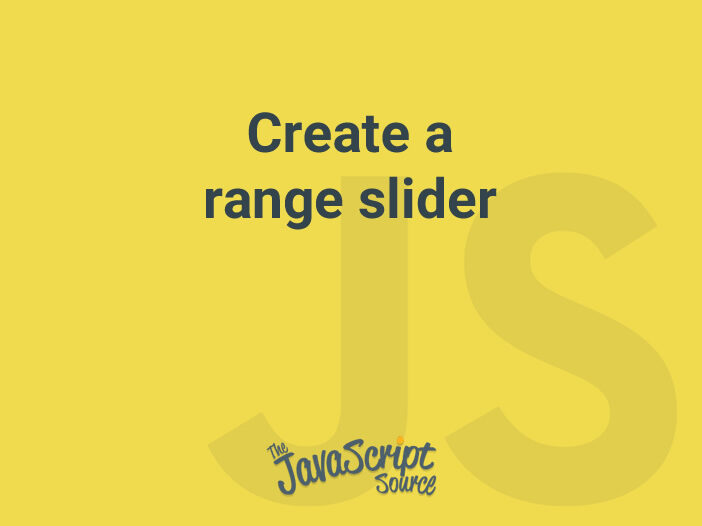
This post introduces two popular ways to create a range slider.
Use a range input
HTML provides a built-in range input:
<input type="range" />It’s supported in modern browsers, IE 10 and later. But there’re some limitations such as:
- You can’t customize the knob
- At the time of writing this, the vertical-oriented slider isn’t supported in all modern browsers
Jump to the next section if you want to have a customizable slider.
Create a customizable range slider
A slider is a combination of three parts: a knob, and two sides located at the left and right of the knob.
<div class="container">
<div class="left"></div>
<div class="knob" id="knob"></div>
<div class="right"></div>
</div>These parts are placed in the same row. The right element takes the available width. So, we can use the following styles to build the layout:
.container {
/* Content is centered horizontally */
align-items: center;
display: flex;
/* Size */
height: 1.5rem;
}
.right {
/* Take the remaining width */
flex: 1;
height: 2px;
}Handle the events
The idea of making the knob draggable is quite simple:
- Handle the knob’s
mousedownevent. The handler stores the mouse position:
// Query the element
const knob = document.getElementById('knob');
const leftSide = knob.previousElementSibling;
// The current position of mouse
let x = 0;
let y = 0;
let leftWidth = 0;
// Handle the mousedown event
// that's triggered when user drags the knob
const mouseDownHandler = function (e) {
// Get the current mouse position
x = e.clientX;
y = e.clientY;
leftWidth = leftSide.getBoundingClientRect().width;
// Attach the listeners to `document`
document.addEventListener('mousemove', mouseMoveHandler);
document.addEventListener('mouseup', mouseUpHandler);
};When the knob is moving, based on the current and original mouse position, we know how far the mouse has been moved. We then set the width for the left side:
const mouseMoveHandler = function (e) {
// How far the mouse has been moved
const dx = e.clientX - x;
const dy = e.clientY - y;
const containerWidth = knob.parentNode.getBoundingClientRect().width;
let newLeftWidth = ((leftWidth + dx) * 100) / containerWidth;
newLeftWidth = Math.max(newLeftWidth, 0);
newLeftWidth = Math.min(newLeftWidth, 100);
leftSide.style.width = `${newLeftWidth}%`;
};There’re more small things that aren’t listed in this post since you can see them in the demo’s source. But I always recommend to cleanup everything when the handlers aren’t used:
// Triggered when user drops the knob
const mouseUpHandler = function() {
...
// Remove the handlers of `mousemove` and `mouseup`
document.removeEventListener('mousemove', mouseMoveHandler);
document.removeEventListener('mouseup', mouseUpHandler);
};